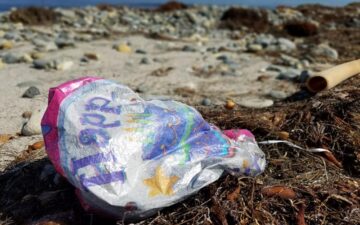By: Matthew Cannistraro
While I interned at the Ocean Foundation, I worked on a research project about the United Nations Convention on the Law of the Sea (UNLCOS). Over the course of two blog posts, I hope to share some of what I learned through my research and to shed light on why the world needed the Convention, as well as why the US did not, and has still not, ratified it. I hope that by examining the history of UNCLOS, I can highlight some mistakes made in the past to help us avoid them in the future.
UNCLOS was a reaction to unprecedented instability and conflict over ocean use. Traditional unfettered freedom of the sea no longer worked because modern ocean uses were mutually exclusive. As a result, UNCLOS sought to manage the ocean as “the heritage of mankind” in order to prevent the inefficient skirmishes over fishing grounds that had become common and to encourage fair distribution of ocean resources.
Over the course of the twentieth century, the modernization of the fishing industry converged with developments in mineral extraction to create conflicts over ocean use. Alaskan salmon fishermen complained that foreign vessels were catching more fish than Alaska’s stocks could support, and America needed to secure exclusive access to our offshore oil reserves. These groups wanted enclosure of the ocean. Meanwhile, San Diego Tuna fishermen decimated Southern California’s stocks and fished off the coast of Central America. They wanted unrestricted freedom of the seas. The myriad of other interest groups generally fell into one of the two categories, but each with their own specific concerns.
Trying to appease these conflicting interests, President Truman issued two proclamations in 1945. The first claimed exclusive rights to all minerals two hundred nautical miles (NM) off our coasts, solving the oil problem. The second claimed exclusive rights to all fish stocks that could not support any more fishing pressure in the same contiguous zone. This definition intended to exclude foreign fleets from our waters while preserving access to foreign waters by empowering only American scientists to decide which stocks could or could not support foreign harvest.
The period following these proclamations was chaotic. Truman had set a dangerous precedent by unilaterally asserting “jurisdiction and control” over previously international resources. Dozens of other countries followed suit and violence transpired over access to fishing grounds. When an American ship violated Ecuador’s new coastal claim, its “crewmen…were beaten with rifle butts and later put in jail when 30 to 40 Ecuadorians stormed aboard and impounded the vessel.” Similar skirmishes were common around the world. Each unilateral claim to ocean territory was only as good as the Navy backing it up. The world needed a way to fairly distribute and manage ocean resources before skirmishes over fish turned into wars over oil. International attempts to stabilize this lawlessness culminated in 1974 when the Third United Nations Conference on the Law of the Sea convened in Caracas, Venezuela.
The most decisive issue at the conference proved to be the mining of seabed mineral nodules. In 1960, firms began to speculate that they could profitably extract minerals from the sea floor. In order to do so, they needed exclusive rights to large swaths of international waters outside of Truman’s original proclamations. The conflict over these mining rights pitted the handful of industrialized countries capable of extracting the nodules against the majority of nations that could not. The only intermediaries were nations that could not yet mine the nodules but would be able to in the near future. Two of these intermediaries, Canada and Australia proposed a rough framework for compromise. In 1976, Henry Kissinger came to the conference and hammered out the specifics.
The compromise was built on a parallel system. A firm planning to mine the seafloor had to propose two prospective mine sites. A board of representatives, called the International Seabed Authority (ISA), would vote to accept or reject the two sites as a package deal. If the ISA approves the sites, the firm can start mining one site immediately, and the other site is set aside for developing nations to eventually mine. Therefore, in order for developing nations to benefit, they cannot obstruct the approval process. For industrial firms to benefit, they must share the ocean resources. The symbiotic structure of this relationship ensured each side of the table was motivated to negotiate. Just as the final details were falling into place, Reagan ascended to the Presidency and disrupted the pragmatic negotiations by introducing ideology into the discussion.
When Ronald Reagan took over control of negotiations in 1981, he decided that he wanted “a clean break with the past.” In other words, a ‘clean break’ with the hard work pragmatic conservatives like Henry Kissinger had done. With this goal in mind, Reagan’s delegation released a set of negotiation demands that rejected the parallel system. This new position was so unexpected that one Ambassador from a prosperous European nation inquired, “How can the rest of the world trust the United States? Why should we make compromises if the United States changes its mind in the end?” Similar sentiments permeated the conference. By refusing to compromise seriously, Reagan’s UNCLOS delegation lost its influence in negotiations. Realizing this, they backtracked, but it was too little too late. Their inconsistency had already damaged their credibility. The conference leader, Alvaro de Soto of Peru, called negotiations to an end to prevent them from unraveling further.
Ideology impeded the final compromises. Reagan appointed several well know UNCLOS critics to his delegation, who had little faith in the concept of regulating the ocean. In a symbolic off the cuff remark, Reagan summarized his position, commenting, “We’re policed and patrolled on land and there is so much regulation that I kind of thought that when you go out on the high seas you can do as you wanted.” This idealism rejects the core idea of managing the sea as “the common heritage of mankind.” Even though, the mid-century failures of freedom of the sea doctrine had illustrated that unfettered competition was the problem, not the solution.
The next post will look more closely at Reagan’s decision not to sign the treaty and its legacy in American politics. I hope to explain why the US still has not ratified the treaty despite its broad support from every ocean related interest group (oil moguls, fishermen, and environmentalists all support it).
Matthew Cannistraro worked as a research assistant at the Ocean Foundation in spring of 2012. He is currently a senior at Claremont McKenna College where he is majoring in History and writing an honors thesis about the creation of NOAA. Matthew’s interest in ocean policy stems from his love of sailing, saltwater fly-fishing, and American political history. After graduation, he hopes to utilize his knowledge and passion to effect positive change in the way we use the ocean.







